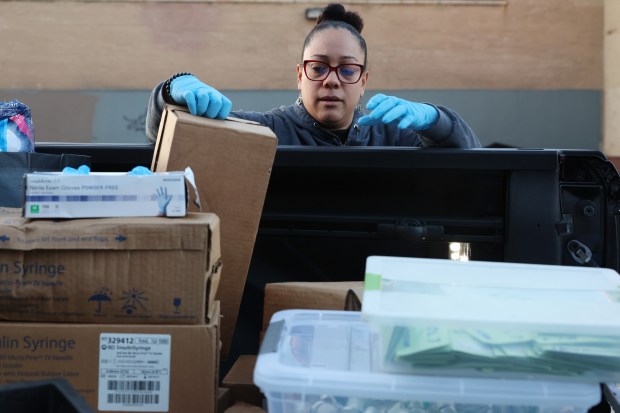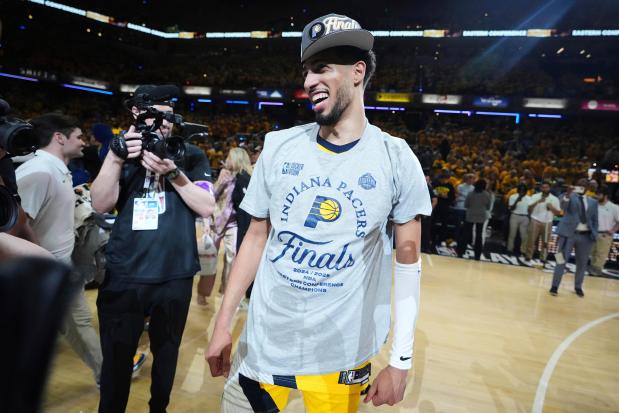Legal settlements with prescription painkiller manufacturers, distributors and sellers have put Illinois in line for some $1.3 billion in payouts intended to help in fighting an opioid crisis that’s still killing tens of thousands of Americans every year.
The payouts stem from multistate agreements with major drug distributors, manufacturers and household names such as CVS, Walgreens, and Johnson and Johnson. Payments started in 2022 and will continue well into the next decade, and offer the potential for a significant investment in harm reduction and treatment efforts. Nationwide, more than $50 billion is expected from the settlements, according to KFF Health News, which tracks the money.
But so far, the flow of settlement money to organizations in Illinois has remained barely a trickle. A complex bureaucratic process for distributing the funds has put only a tiny fraction of the money into the hands of organizations dealing with the crisis.
“I am concerned that it doesn’t appear that significant funds have been dispersed up to this point,” said Tanya Sorrell, director at the Rush Substance Use Disorder Center of Excellence and co-chair of the Illinois Harm Reduction and Recovery Coalition.
Overall, Illinois has received more than $200 million from the largest national opioid settlement to date, according to the KFF Health News’ tracker. The estimated future payout from that settlement is more than $572 million, according to KFF. Additional smaller settlements will bring in hundreds of millions more over almost two decades.
The money from the settlements is split three ways: 55% goes to a so-called remediation fund, while the rest is divided between state administrative costs and local governments, according to an emailed statement from the Illinois Department of Human Services and the state attorney general’s office.
As of last week, about $103 million in the remediation fund had been approved for specific programs, but only about $5 million had been handed out, according to slides presented by State Opioid Settlement Administrator Jim Wilkerson at a public meeting.
That has frustrated some advocates who say the speed at which the money is being doled out doesn’t match the urgency of an issue that’s still deadly for Illinoisans. More than 13,000 Illinois residents died from an opioid overdose between 2018 and 2022, according to the state.
Additional funds may have been expended on the local level but those payouts are not tracked publicly by the state.
The settlements between pharmaceutical companies and states are in many ways similar to those from the Big Tobacco lawsuits of the 1990s. Unlike the tobacco settlement, though, there are a greater number of guardrails for Illinois and other states on how the money is spent.
The tobacco settlement in many cases was used to shore up budgets overall rather than on anti-tobacco programs; Illinois in 2000 used part of its share of the funds for hundreds of millions of dollars in tax breaks, some mailed directly to taxpayers shortly before the November 2000 election.
The money in the Illinois remediation fund must be used for strategies to mitigate the crisis at hand, per the state’s settlement allocation agreement. Other states have interpreted that directive broadly, from safer syringe programs to treatment centers to bolstering law enforcement.
The pace of distributing money from the remediation fund soon “should pick up,” after the first few notices of funding opportunities were released early this year, said Jud DeLoss, CEO of the Illinois Association for Behavioral Health and a member of the Illinois Opioid Remediation Advisory Board. The board, which has met since 2022 and consists of leaders both inside and outside government, makes recommendations on how the fund should be spent.
It’s aiming to “average an annual spend of about $42 million,” Wilkerson said in a public meeting last week.
John Werning, executive director at the harm reduction organization Chicago Recovery Alliance, said his biggest concern is the government’s inability to get the money quickly to those trying to mitigate deaths and overdoses on the ground.
“Even government moving swiftly is often slower … than what the current crisis calls for,” said Werning, whose group provides counseling, naloxone and safer materials from mobile vans to people who use drugs. He is also a part of the state advisory board’s working group on access and equity.
Opinions differ on how the payouts should be prioritized, and DeLoss and Werning have already questioned how some of the funds had been allocated.
DeLoss said he thinks the money should be most focused on community programs that can make a large, direct impact, and took issue with the early allocation of $3.75 million — and nearly $1.7 million paid out — into Illinois’ prescription monitoring program. The program, an existing service overseen by the state, tracks dispensing data on certain drugs, including prescription opioids.
“It’s kind of frustrating … that some of these funds got out the door early to those kinds of recipients that really aren’t deeply enmeshed in dealing with this crisis, and those that are dealing with it are trying to address extremely complicated requirements for funding opportunities that hamstring them,” DeLoss said.
It’s “clearly not a life or death situation to fund the PMP,” he said. The majority of the board, however voted to support the funding of the program last year, as part of the key strategy to prevent over-prescribing opioids, a spokesperson for IDHS and the attorney general’s office said in an email.
The process for distributing money from the remediation fund to community organizations is complicated, involving dozens of people and a handful of entities meant to ensure the money is used responsibly. An explanation of the process provided in one advisory board Zoom meeting included two slides, 10 steps and nearly a dozen acronyms.
Strategy ideas initially go through the office of State Opioid Settlement Administrator Wilkerson, then through the board tasked with making recommendations. Those recommendations are taken up by a steering committee led by Lt. Gov. Juliana Stratton, then reviewed by the attorney general’s office. The division of IDHS tasked with substance use strategizes for the plan’s implementation, then forwards it to yet another entity that handles the actual notice of funding opportunity and selection of grantees.

Only at that point would groups doing the actual work to fight the epidemic actually see the money.
All of the money so far has gone to programs previously funded by the state. Werning said organizations like his own that focus on harm reduction — seeking to reduce the physical and societal harms of opioids and keep users alive, as opposed to an abstinence-based approach — should be in line for more funding.
And as the harm reduction philosophy becomes more mainstream, there’s more groups in competition for funds set aside for the purpose, he said.
Community leaders said they appreciate efforts by the state to make funding opportunities accessible to smaller organizations. And they stressed that they’re ready with programs and ideas to help people with substance use disorder once the money comes in.
“We know what to do,” said Melissa Hernandez, director of the Puerto Rico Project, a program specializing in outreach to people who are homeless. “We just don’t have enough people.”





